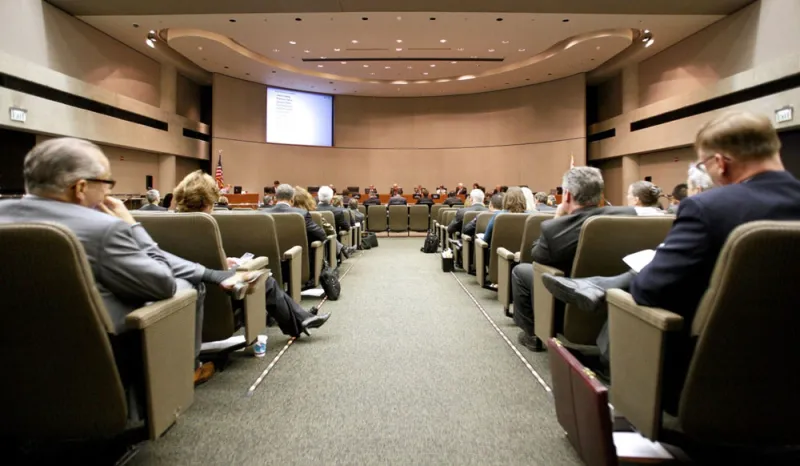Good news for active managers: Other major pension funds are not following the California Public Employees’ Retirement System’s lead in terminating equities managers.
Over the past three months, CalPERS let go of 14 external active equities managers, leaving three behind, which are now collectively managing $5 billion in assets, according to Megan White, an information officer at CalPERS. Prior to the decision, external active equities managers were managing more than $30 billion on CalPERS’ behalf, White said via email. Now, 95 percent of the retirement system’s global equities will be managed in-house, bringing the proportion of the total portfolio that is internally managed to 78 percent.
According to White, CalPERS has been evaluating its external active equity managers for the last 18 months. While the evaluation predates chief investment officer Ben Meng, who assumed his role in January, White said Meng fully supports the “effort to sharpen our investment focus.”
CalPERS appears to be unique among large U.S. pension funds in drastically reducing the amount of assets managed by external active managers. While some large pensions have recently terminated or replaced managers, none of the funds reached by Institutional Investor said they planned to follow in CalPERS’ footsteps.
[II Deep Dive: CalPERS Looks to Shovel More Money Into Private Equity]
The California State Teachers’ Retirement System, for example, got rid of three active equities managers year-over-year, public pension documents showed. However, at least two of the allocation decisions appear to be tied to changes at the managers themselves, not within CalSTRS: Relational Investors shut down, while Geneva Capital Management became part of Janus Henderson in 2017, according to the two firms’ respective websites.
CalSTRS also hired two new managers, Hotchkis and Wiley Capital Management and BMO Global Asset Management boutique Pyrford International, according to the pension’s investment report for the period ending on June 30th. A spokesperson for the CalSTRS declined to comment.
The Florida State Board of Administration similarly dropped three managers in the 2017 fiscal year, and four in fiscal year 2018, public pension documents showed. Strategies from Signia Capital Management, Epoch Investment Partners, and William Blair & Company were put on the chopping block between 2016 and 2017, while SBA terminated funds from Fidelity Investments, Franklin Templeton, Harmonic Capital Partners, and Trilogy Global Advisors between 2017 and 2018.
However, the Florida pension also made six new investments during the two year period, including allocating to two BMO funds, Los Angeles Capital Management, Alliance Bernstein, Thompson, Siegel and Walmsley, and GMO. John Kuczwanski, manager of external affairs at SBA, said via email that the pension fund added one more equity manager last year, U.K.-based Baillie Gifford.
“There is nothing in law or policy that is keeping us at a specific number of managers,” Kuczwanski said.
The Washington State Investment Board, for its part, did not fund or defund any active public equity managers in 2019, according to Chris Phillips, the fund’s director of institutional relations and public affairs. However, public pension documents show that between 2017 and 2018, WSIB did drop one manager, Aberdeen. “The WSIB’s 2018 decision to drop Aberdeen (now Aberdeen Standard) was largely driven by the announcement of the merger of Aberdeen and Standard Life and our uncertainties at that time regarding the organizational changes inherent in such a merger,” Phillips said via email.
Meanwhile, the New York State Teachers’ Retirement System has no plans to reduce the active portion of its portfolio, according to a person familiar with the matter. Twenty-seven percent of its assets are externally managed by active investment firms.







